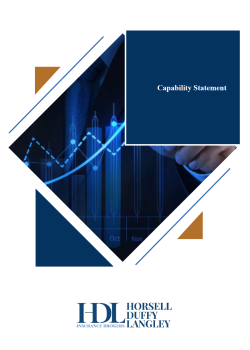1. Cross-border exposures have never been more volatile for multinationals. Expect the unexpected.
The volatile socio-political environment has dramatically impacted the risk landscape, presenting risk managers with the challenge of how best to protect their companies in the face of conflict, political unrest, economic risk, supply chain disruption, increasing cyber threats and climate change. Most experts predict that businesses will continue to experience significant disruption around the world for some time yet. Scenario planning is vital in order to plan for the growing number of crises, as is ensuring holistic insurance cover is in place.
2. A Complex regulatory environment, broadening client footprints and improving technology mean the global insurance program market is poised for sustained growth.
The multinational insurance program market is set to grow in 2023 aligned with the general growth rate of multinational enterprise which is estimated to be beyond 60% globally since 2010. Anticipated drivers of future growth include our ever more interconnected world, a broadening customer footprint as international companies expand, the increasingly complex regulatory, tax and reporting environment around the world, and lower barriers of entry as digital tools and portals help facilitate service improvements. Global insurance programs ensure full insurance coverage and can help prevent any regulatory violations. At the same time, global risk consulting and claims services are becoming increasingly important, given this current environment.
3. Digitalisation is unlocking real-time data and enabling greater collaboration.
Companies have woken up to the power of data in their businesses, and increasingly want to conduct business digitally. When it comes to global insurance programs, firms now expect much faster turnaround times than in the past.
In response, the world’s leading insurers, including Allianz through our digital portal, are turning to digitalization to improve how they operate global insurance programs, speeding up systems and improving data collection and analytics, including 24/7 accessibility and real-time updates. API (application programming interface) technology is enabling a more streamlined, real-time exchange of data between stakeholders. Such improvements are enabling greater transparency over what is covered under a local policy and what is covered under a master. Any potential gaps can then be easily identified and addressed, making things easier for clients, brokers and insurers alike.
Ultimately, digitalisation is helping to deliver a better and deeper understanding of risk. It is making it easier for risk managers to take an active role in risk management, offering increased access to data and greater levels of collaboration with insurers and brokers, both of whom, in turn, can then spend more time on client-focused activities.
4. Growing use of captives alongside global insurance programs.
Many multinationals are increasingly using their captives alongside their global insurance programs, either with or without risk transfer or as a full-service captive. Captives are growing in popularity, particularly if there is a lack of capacity in certain areas or effective rate increases on certain lines of business means that for companies either increasing utilization of the captive they have or forming a new captive or cell captive is an attractive option. Financial lines, errors and omissions, D&O and cyber have been among the most popular lines of business for multinational captives.
A captive is an invaluable tool when it comes to coordinating the different covers of various subsidiaries around the world and collating risk information on exposures and losses.
5. Post Covid-19, the awareness of the need for greater contract certainty is growing.
The pandemic brought some challenges that tested the relationships between risk managers and insurers, particularly around which risks were covered, and which were not. This has led to a greater focus on contract certainty and data analytics, as well as increasing interest in global insurance programs, which can be an important tool for helping multinational companies tackle the ever-evolving risk landscape.
Contract certainty is one of the big insurance lessons learned from the Covid-19 pandemic. It is clear that there needs to be better greater clarity around what policy wordings actually mean in order to have a better understanding of what is and what isn’t covered.
Global insurance programs deliver full transparency over what is covered under a local policy and what is covered under a master. Any potential gaps can therefore be easily identified and addressed as needed, making things easier for all parties.
6. Global insurance programs can help organizations with ESG and emerging risks.
Environmental, social, and governance (ESG) issues are increasingly landing on the desks of risk managers. Multinationals face growing interest and increasing scrutiny from regulators, investors, customers, and employees about their ESG footprint.
In global insurance programs, ESG is integrated into underwriting via industry leading rules and tools, while technology and data analytics is increasingly delivering better insights into big, emerging risks such as climate change, cyber and global supply chain issues.
7. Don’t forget the growing influence of AI and virtual economies.
Artificial intelligence (AI) applications bring benefits such as increased efficiencies, new products and fewer repetitive tasks, while the metaverse – the space where interconnected physical and virtual realities converge – has the potential to provide experiences not available in the real world, giving rise to a booming virtual economy.
Insights gained from AI-powered analytics and data could expand the boundaries of insurability, extending existing products, as well as giving rise to new risk transfer solutions.
However, as with any disruptive technology, increasing usage of AI and engagement with the metaverse will also introduce new risks and potential liability scenarios to society. To ensure their safe and secure use, both will need rules among users and platform providers and appropriate measures for enforcing them.insuran

